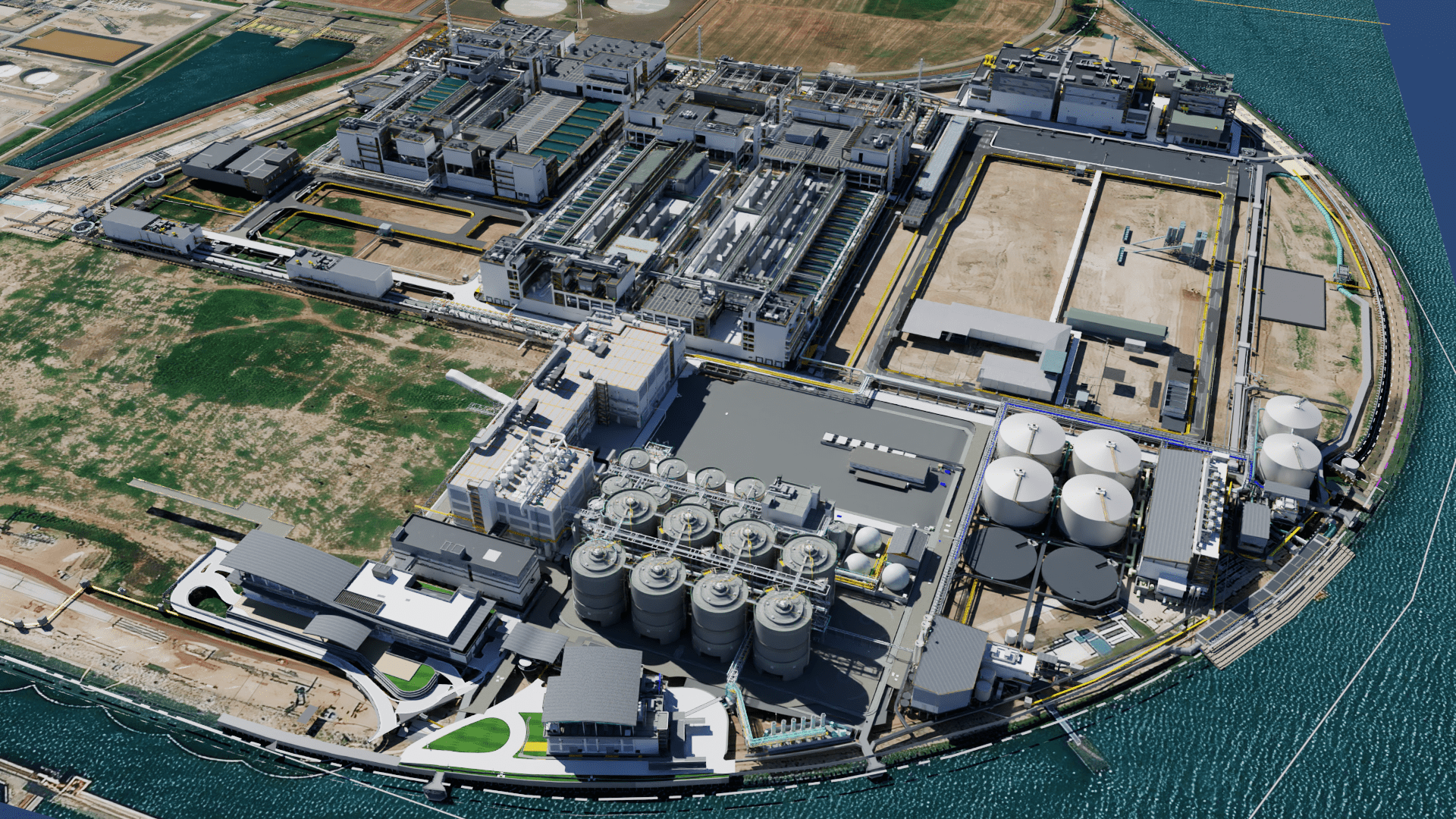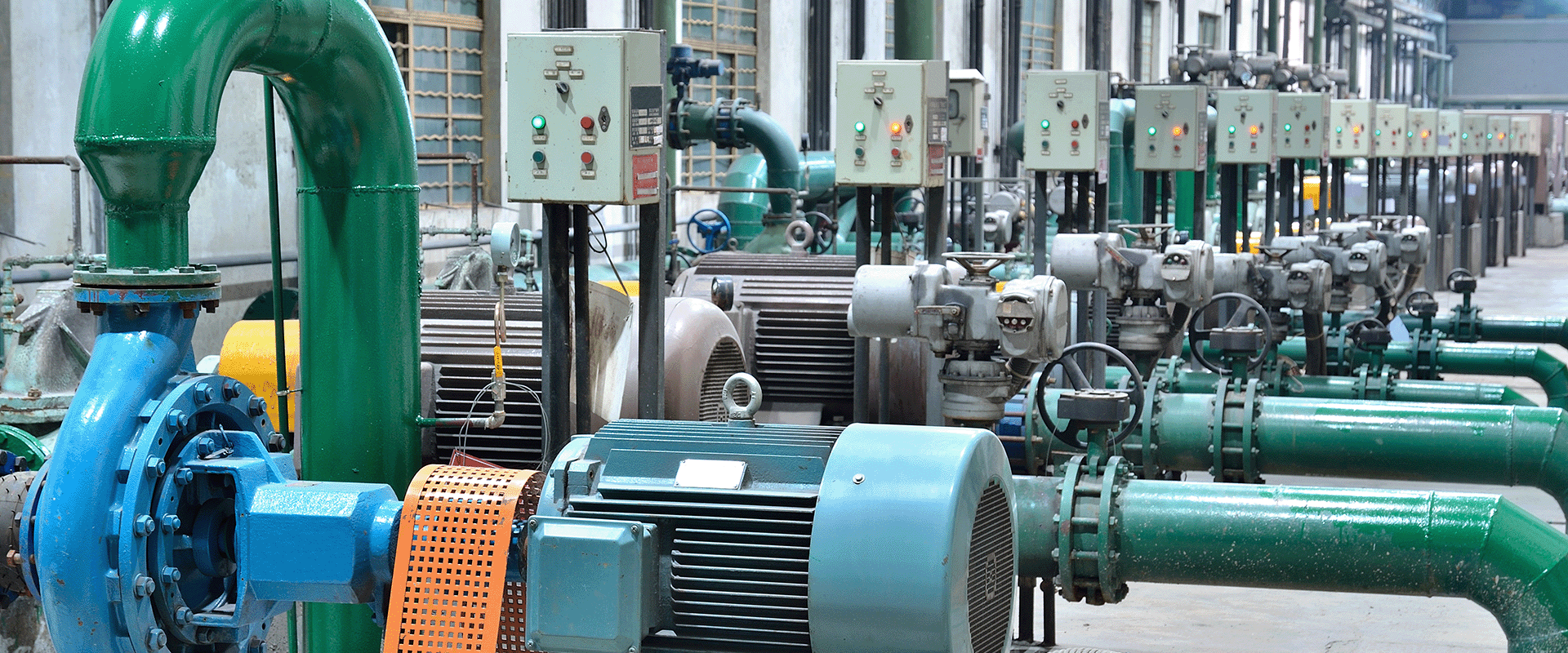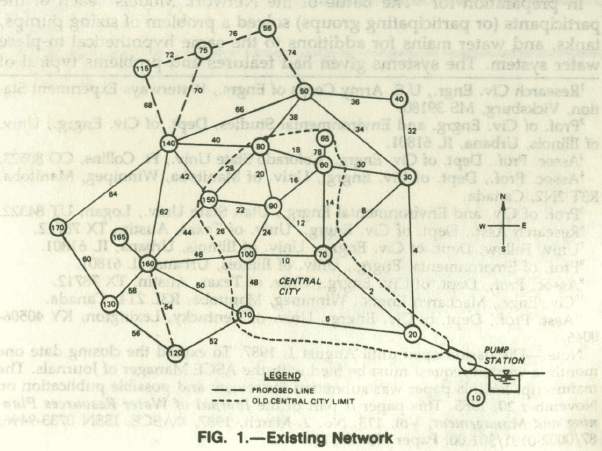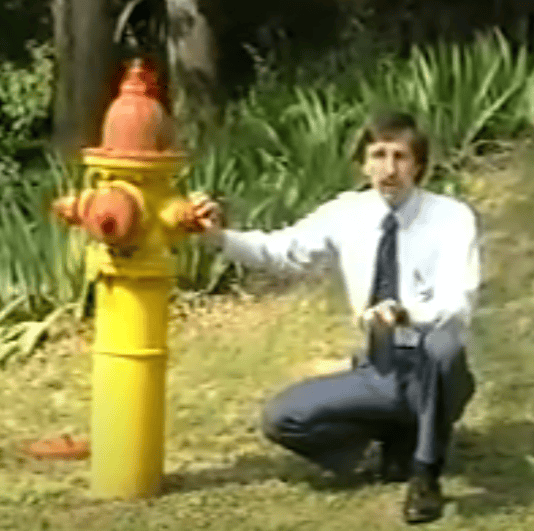Pumps & Systems magazine had a good article recently on the need to calibrate pressure gauges. They pointed out that pressure gauges (and sensors) tend to lose accuracy over time; specifically, that gauges should be calibrated at a regular interval, suggesting annually as typical. Also noted was that gauges used in more extreme environments (corrosion, vibration) should be checked more frequently.
In my experience, the typical calibration interval for most water and wastewater system gauges is never. It’s not uncommon to see gauges that have been in service for decades still in use. In some cases, this works out fine, but you can’t be sure without calibration.
Who cares? In some cases, it may not matter. For those who want to ensure that the pressure is somewhere between 40 and 80 psi, readings of 47, 65, or 71 are more or less equal. In most cases, however, readings are expected to be somewhere around +/- 1 psi. For example, with use cases such as pressure-based controls, anomaly detection, alarms, pressure-based demands, and, for me, model calibration, I expect at least that level of accuracy.
So, how do you achieve this assurance? The standard method is using a dead weight pressure gauge tester. If your gauge tests well, you can use it with confidence. If it is out of calibration, and if the gauges you use are of good quality, adjustments can be made. In other cases, you can develop a calibration table or curve relating a pressure reading to the actual pressure. Worst case scenario, you toss the bad gauge into the trash.
Some folks tell me that they check their gauge by comparing it with a ‘good gauge.’ My question then is “How do you know that the ‘good gauge’ is accurate?” The response is usually a frown. To use this ’good gauge’ approach, the good gauge must recently have been calibrated.
Just because a gauge is brand new doesn’t ensure that it is accurate. It’s good practice to check a new gauge before placing it in service.
Then, there is the myth of SCADA data accuracy. It’s not uncommon for a SCADA screen to display pressure along the lines of 61.4765 psi. Looking at this value, an operator may think that such a value is accurate when actually the digits to the right of the decimal place are little more than random numbers. A precise digital display does not ensure accuracy.
When you are collecting data for model calibration, the pressure data must be accurate. Remember, the fundamental rule for modeling is GIGO (Garbage In, Garbage Out). It’s frustrating when you complete your calibration to realize that some of your data were collected with inaccurate gauges and you have been wasting your time trying to get a good model to replicate bad data. A potential solution for this is that after your data collection, you perform an ‘as found’ calibration. This consists of testing each gauge with a dead weight tester and developing a calibration curve or table to correct your field data.
There are standards for pressure gauge accuracy published by ASME (ASME Standard 40.1). I extracted the table below from a web page by Instrumart, a company that sells all sorts of instrumentation.
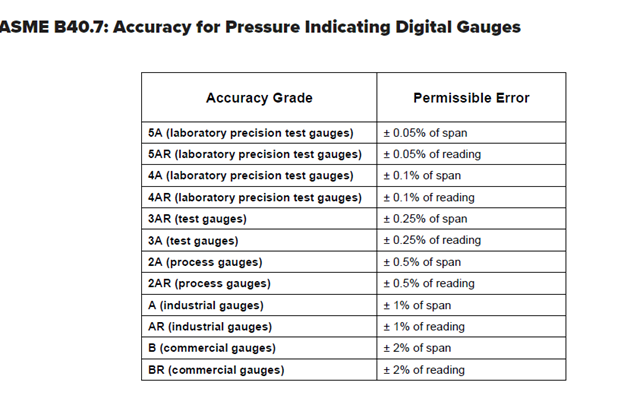
For typical water and wastewater work, a Type A gauge should be adequate. As the accuracy increases, the cost increases significantly for small increases in accuracy, or the closer you get to perfection, the higher the cost. Plus, more accurate gauges tend to be more delicate.
With dial type pressure gauges, the permissible error depends on where the reading falls on the span of the gauge. For example, if using a Type A gauge, the error should be less than 1% in the middle 50% of the range but can be 2% in the lower and upper 25% of the range. This means that if you are selecting a gauge with a span of 200 psi, it should be most accurate between 50 and 150 psi.
While it’s important not to over-pressurize a gauge, as this can damage the gauge, it is also important to apply gauges where they are most usable. If the range of pressures on the suction side of a pump is expected to be 5 to 15 psi, don’t use a gauge with a 200 psi span. It will only be accurate to +/- 2 psi and it will be difficult to read when the values are less than 10% of full scale.
When buying a gauge, select one with a large face. I suggest four-inch for flow testing. Trying to read pressures from a gauge with a one-inch face is difficult and can introduce inaccuracy.
If you are using gauges for fieldwork as opposed to a permanent installation, please handle them carefully. They are not indestructible.
I realize that most of the above are basic instrumentation 101, but the instances where these good practices aren’t followed warrant a review.
Want to learn more from our resident water and wastewater expert? Join the Dr. Tom Walski Newsletter today!

